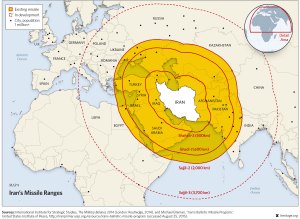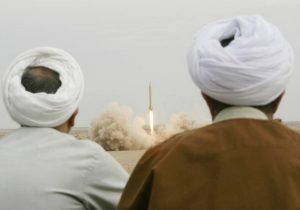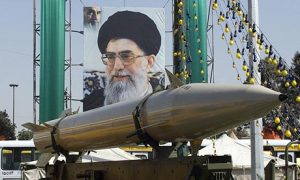
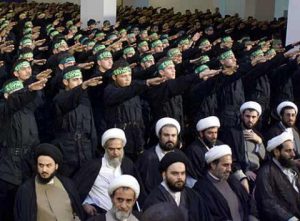
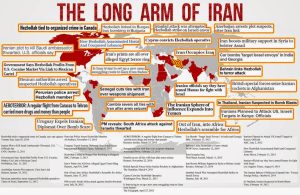
Trump’s Middle East doctrine
A key objective is the isolation of Iran
by Admiral James A. Lyons, USN (ret.)
ANALYSIS/OPINION:
President Trump’s historic visit last month to Saudi Arabia, where he met with the heads of more than 50 mostly Sunni heads of state, dramatically marked the end of eight years of Barack Obama’s appeasement of Iran. It signaled to all the Muslim leaders that the United States as the “strong horse” is back. There was no doubt in any of the Muslim leaders’ minds that Mr. Trump is a man of action and a leader who will keep his word.
Mr. Trump’s goal of establishing a coalition of nations that share the objective of defeating terrorist groups and providing for a stable and hopeful future made it clear that the assembled nations cannot be indifferent to the presence of evil. That evil is represented not only by the Islamic State (ISIS), al Qaeda et al., but also by Iran, the recognized world leader of state-sponsored terrorism. In that sense, one of the key objectives of the summit was to isolate Iran, a goal embraced by the coalition, as well as their shared disdain for the Obama administration’s atrocious failed nuclear agreement with Iran.
Mr. Trump also made it clear that this coalition of nations must adopt a policy of “sovereign responsibility,” which means that they cannot wait for American power to defeat the enemy for them. They must be directly involved, with our assistance.
Nonetheless, the Trump doctrine must be driven by our core vital interests, which are:
- Eliminating ISIS as a functioning entity.
- Preventing Iran from achieving a nuclear weapon capability.
- Preventing Iranian hegemony throughout the Middle East.
- Removing the Iranian theocracy from power.
- Re-establishing and strengthening our relations with our traditional allies.
- Ensuring the survival of Israel.
- Establishing a sovereign Kurdistan.
- Maintaining freedom of navigation throughout the Persian Gulf and Red Sea, including strategic choke points, e.g., the Suez Canal, the Bab el-Mandeb Strait and the Strait of Hormuz.
The establishment of a Global Terrorism Center for Combating Extremism in Riyadh was a manifestation of the shared objective of defeating terrorist groups and isolating Iran, but its effectiveness will depend on results. The same can be said for the establishment of the Terrorist Financing Targeting Center, co-chaired by the United States and Saudi Arabia, as well as the United States-United Arab Emirates Center to Counter the Online Spread of Hate. It was clear to all the attendees that a peaceful, stable future can only be achieved by defeating the ideology that drives terrorism. Carrying this out will require some very fundamental and painful changes. For example, mosques and imams that preach hate and urge all Muslims to conduct violent jihad should be closed and the imams removed.
Concrete steps must be taken to stop funds from going to radical mosques and front groups that promote terrorism. Targeting funds being sent to various terrorists groups, e.g., ISIS and al Qaeda, must receive immediate priority. The source of these funds, be it from individuals or states like Qatar, must be identified and interdicted.
Qatar has been a particular problem because of its support of the Muslim Brotherhood and its cozy relationship with Iran. This came to a head on June 5, when Saudi Arabia broke diplomatic and some commercial relations with Qatar over its terrorist financing and its links to the Muslim Brotherhood, ISIS, Hamas and the Houthi rebels in Yemen. Qatar’s relationship with Iran was a decisive factor in causing the United Arab Emirates, Egypt and Bahrain to quickly join with Saudi Arabia in breaking relations. Most land, sea and air routes to Qatar have been closed. Qatar is an isthmus whose only land route is through Saudi Arabia by which it receives 40 percent of its food. This is a major problem for Qatar, despite Turkey’s offer of food and water delivered by sea.
Another issue that must be addressed is the U.S. Central Command’s forward air base in Qatar, which has been an essential element of our air campaign in the region. As of today, there has been no impact on U.S. air operations, but contingency plans should be made ready for an alternative air base if regional relationships further deteriorate.
An underlying element of the Trump doctrine that cannot be overstated is recognition that 65 percent of the population of the Middle East is under the age of 30, and that those youths must be provided with opportunities for a satisfying life as an attractive option to the lure of terrorist groups. While this is a worthy objective, Muslims don’t commit to jihad because they don’t have jobs. They commit to jihad because they are devout Muslims, many with university degrees. The only way they can be dissuaded from jihad is to see a crushing defeat of jihadis on the battlefield. Once they understand they cannot win, they are obligated by their own doctrine to back off.
Saudi Prince Mohammad bin Salman is taking the lead for economic and cultural reform in Saudi Arabia, and other members of the coalition should follow. Nevertheless, the indispensable principle for achieving the objectives of the Riyadh summit is the isolation of Iran, the prime mover of instability throughout the region. As a start, sanctions on the mullahs’ ballistic missile programs must be imposed. Further, until the unsigned nuclear weapons deal with Iran is formally canceled, real inspections by the U.N. International Atomic Energy Agency must be conducted on all the sites in their nuclear weapon infrastructure.
Finally, an aggressive plan must be developed with the objective of removing the regime of Ayatollah Ali Khamenei from power. That is the first principle of any plan to return stability and peace to the Middle East.
- James A. Lyons, a retired U.S. Navy admiral, was commander in chief of the U.S. Pacific Fleet and senior U.S. military representative to the United Nations.
